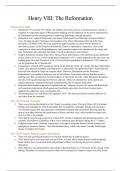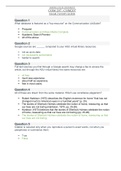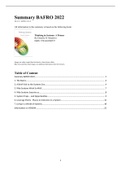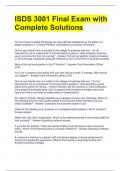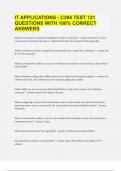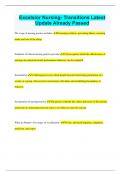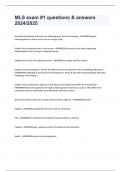Renaissance ideas
During the 15th and early 16th century, the cultural movement, known as the Renaissance, spread to
England. An important aspect of Renaissance thinking was the emphasis on the power and potential
of humankind and the encouragement of improving knowledge through education.
Humanism was a cultural Renaissance movement which based its scholarship of original biblical
texts, focusing on early Christians and examples set by Christ. Humanists believed in the basic
principles of Catholic faith, but were against the papal hierarchy (as there was no mention of
intercessory prayer in the Gospels), attacked the Church’s exploitation of practices, such as the
veneration of saints and selling indulgences, and wanted to improve the education of the clergy and
laity. Humanists advocated personal faith, centred around prayer and refection.
Notable humanists included John Colet, Thomas More and Erasmus, who published many influential
works, such as In Praise of Folly (published in England in 1511) which targeted monks who were not
leading godly lives and Handbook of the Christian Knight (published in England in 1533) which set
out the guidelines for a Christian life.
Lutheranism, a branch of Protestantism based on the theology of the 16 th century German monk Matin
Luther, also spread to England. Like Humanism, Lutheranism was against the Pope’s leadership and
believed faith should be based on scripture alone. However, Humanism and the Protestant
Reformation were unable to make any sort of real alliance; Protestants believed that this world is
nothing more that a preparation for the Kingdom of God in the next life, while Humanists promoted
the idea of living and enjoying this life here and now. Moreover, Humanisms were against any
relgious hierarchy, whereas Protestants maintained the idea of relgious leadership.
Protestant ideas tended to spread to England from the Continent via ports in London and Bristol; the
ecclesiastical commissions which questioned merchants upon their return from German ports,
suggests the authorities were concerned by this.
The printing press was introduced in England in 1476. This increased literacy and the diffusion of
new ideas from the continent.
Pre-1529 Church: Economy
There was growing discontent over the Church’s economic power. On top of tithes (10% of annual
produce and earnings) the Church demanded fees for baptisms, marriages, burials and mortuaries.
A.G Dickens argues that such payments contributed to popular anti-clericalism, drawing upon the
quarrel over tithes between the parishioners of Hayes and their vicar, which resulted in large scale
riots in 1530, as an example.
The Church owned a large proportion of land (30% of land in England) and dominated markets – for
example, Christchurch Canterbury Abbey was a notorious grain producer during the 13 th century.
Religious houses were criticised in particular, with reports of monks dressed in fine clothing and
indulging in luxurious dinners – New Buckenham Priory, which only house 9 monks, had enough
money to employ 50 servants.
Pre-1529 Church: Judicial matters and politics
There was also growing discontent over clerical interference in judicial matters.
The Church had its own court and own set of laws in Latin, which meant laymen could mistakenly
break clerical laws, be arrested, tried and punished without even having the power to defend
themselves.
Such unfairness was epitomised by the murder of Richard Hunne in 1514, whilst in the custody of the
Bishop, Fitzjames, for refusal to pay his infant son’s mortuary fee. Hunne’s corpse was tried, found
, guilty of heresy and burned at the stake, showing that the Church was powerful enough to bypass the
secular court and take justice into its own hands.
‘Benefit of the clergy’ was viewed as unfair as it granted clergymen the right to be tried in an
ecclesiastical court under canon law, allowing the avoidance of harsher punishment.
There was discontent over the Church’s role in politics. Owing to their literacy and education, bishops
and abbots often acted as government advisors and sat in the House of Lords. This meant the Church
could influence English politics, creating concern among MPs, who saw the Pope as an extended
interfering power. Pope Leo X had, for example, condemned Parliament’s use of statutes to restrict
the ‘benefit of the clergy’ in 1512.
Pre-1529 Church: Clergy
The inadequate quality of the clergy was often criticised. An increase in clergymen entering
administrative services resulted in absenteeism – the Lincoln Diocese (1496-1521) had 2999
vacancies and only 1655 ordinations to fill them.
Absenteeism pluralism (in the Lincoln Diocese, 1/3 of all priests were pluralists), non-residency
and the appointment of curates. Consequently, parishioners did not receive a regular or high standard
of services, which would ultimately affect the Salvation of their souls.
Quality of the clergy did improve during the 1500s with the sharp rise in educational facilities and
graduates entering the Church (increased by 19% between 1500-30). However, the majority of well-
educated clergymen still went into administrative services.
The ‘morally bankrupt’ nature of the clergy was also criticised. John Colet, a leading humanist,
claimed that clerics were guilty of greed, arrogance, sexual debauchery and having commercial
interests.
The papal Legate, Thomas Wolsey, had a mistress and two illegitimate sons, he displayed extravagant
wealth and held multiple titles, including the Bishop of Durham, Bishop of Winchester and Abbot of
St Albans, which bolstered his income significantly.
As literacy rate and access to vernacular literature increased, a growing number of humanists could
access the Bible and began to question such matters, leading to a movement of the regeneration of the
Clergy along classical, Christ-like lines.
Was the Church in need of reform?
In hindsight the Church was in need of reform. It is clear that it had other focussed, in addition to, or
rather than, serving and carrying out the work of God.
However, as revisionist historian Haigh explains ‘such a view is based on modern rather than Tudor
attitudes.’
The vast majority of the population was content with the state of the Church: it provided a sense of
community, took charge of the annual calendar and allowed the laity to absolve their sins and earn
Grace.
There was in fact active support for the Church: £305 was raised by parishioners to fund the building
of the Louth Spire and £25 by the parishioners in Morebath for a new Cope for their priest.
There was also opposition to the changes made during the Reformation, for example, 40,000 rebelled
against the closing of monasteries in Lincolnshire and Yorkshire in 1536 (Pilgrimage of Grace), even
though such monastic houses had been criticised for hoarding wealth.
Those who did push for change did not necessarily desire a complete break from the Catholic Church.
For example, although MPs were concerned by the Church’s influence in their own areas of interests,
including commerce and law, this did not signify that they were against the Catholic belief system.
Moreover, Henry, like previous monarchs clearly dislike the extent of papal influence in England
(hence the recourse to the Statute of Praemunire during the 1520s), but this did not mean he was
against the Catholic Church. Conversely, evidence suggests he was in fact a supporter; in 1521, the
Pope named Henry ‘Defender of the Faith’ in recognition of his book Defence of the Seven
Sacraments which defended papal supremacy. It is arguable that he only instigated the Reformation to
, remove papal obstacles to his divorce from Catherine of Aragorn; he did not go into with the intention
of fully transforming the English Church.
Reformists certainly did exist in England before 1529: a small group of Lollards, who criticised papal
authority, had survived since the late 14th century, mainly in south-east and Lutheran ideas began to
reach England during 1520s. The spread of these evangelical ideas was helped with the printing press
and William Tyndale’s illegal printing of the Bible in English. Reformists, however, were a minority
and made no significant changes.
Although anti-clericalism was no seen a cause for the Reformation, it certainly created an
environment in which the break with Rome was conceivable.
The divorce issue
By 1527, Henry had decided that he wanted to divorce Catherine of Aragorn, who had failed to
produce a male heir and was now beyond child-bearing age, and to instead marry Anne Boleyn. A
need to establish the line of succession, through an undisputed legitimate male heir became a priority
for Henry.
To achieve the divorce, Henry needed to prove the marriage had never been legal in the first place.
Henry and Wolsey disagreed on how to go about this.
Henry wanted to follow the arguement that the original dispensation of the impediment of
consanguinity, which forbade a second marriage in the same generation (Henry had married his
brother’s widow, and thus this applied), issued by Pope Julius II, was insufficient because no pope
had the right to ignore divine law and the biblical text of Leviticus. Thus, the marriage would never
have been legal and the Pope would be forced to annul it.
Wolsey, however, did not want to use this argument as it would suggest Pope Julius II had usurped
God’s law. Moreover, the Papacy could follow the argument found in the Book of Deuteronomy,
which stated a man could marry his brother’s widow if she was childless and have children by her on
his brother’s behalf. Thus, Wolsey feared that Henry’s argument would not hold up.
Instead, Wolsey urged Henry to urge a technical defect in the original dispensation, which implied
Catherine and Arthur’s marriage had been consummated (as Henry VII had argued, as he didn’t want
to give back the dowry). Wolsey wanted to follow the argument that the marriage had never been
consummated and the original dispensation of the first degree of affinity was a technical defect. Henry
refused as it implied that his father had lied.
It should be noted that Wolsey’s argument may have also failed as the Spanish could put forward the
Bull which had been granted to Catherine in which the phrase ‘forsans consummatum’ (perhaps
consummated) appeared.
Pope Clement VII, who was being pressured by Charles V, wanted to be removed from the decision-
making process and instead the case was to be tried by two papal legates – Wolsey and Campeggio.
In May 1529, the Legatine court met at Blackfriars (after being delayed for 7 months). Catherine was
summoned to appear at court, but when she did, she refused to recognise the court’s right to hear the
case and appealed directly to Rome. Henry urged Campeggio to proceed with the hearing which he
did until late July when he suspended proceeding to follow the Roman court timings. A month before
the court was due to reconvene, Pope Clement summoned the case to Rome.
Who was responsible for the failure to secure a divorce?
Henry: Ordered Wolsey not to develop links in Rome, which meant he didn’t understand how to cut
through papal bureaucracy; relationship with Mary Boleyn, which further complicated matters as the
Pope would have to remove an impediment of consanguinity; refusal to follow Wolsey’s advice; sent
the wrong people to push his cause in Rome (e.g., George Boleyn).
Wolsey: Believed Anne Boleyn was another passing fancy and arguably feared the diminution of this
own power if Henry married Anne, who expected to become his confidante in all matters of
importance and thus delayed acting; poor relations with Campeggio which hampered progress at


